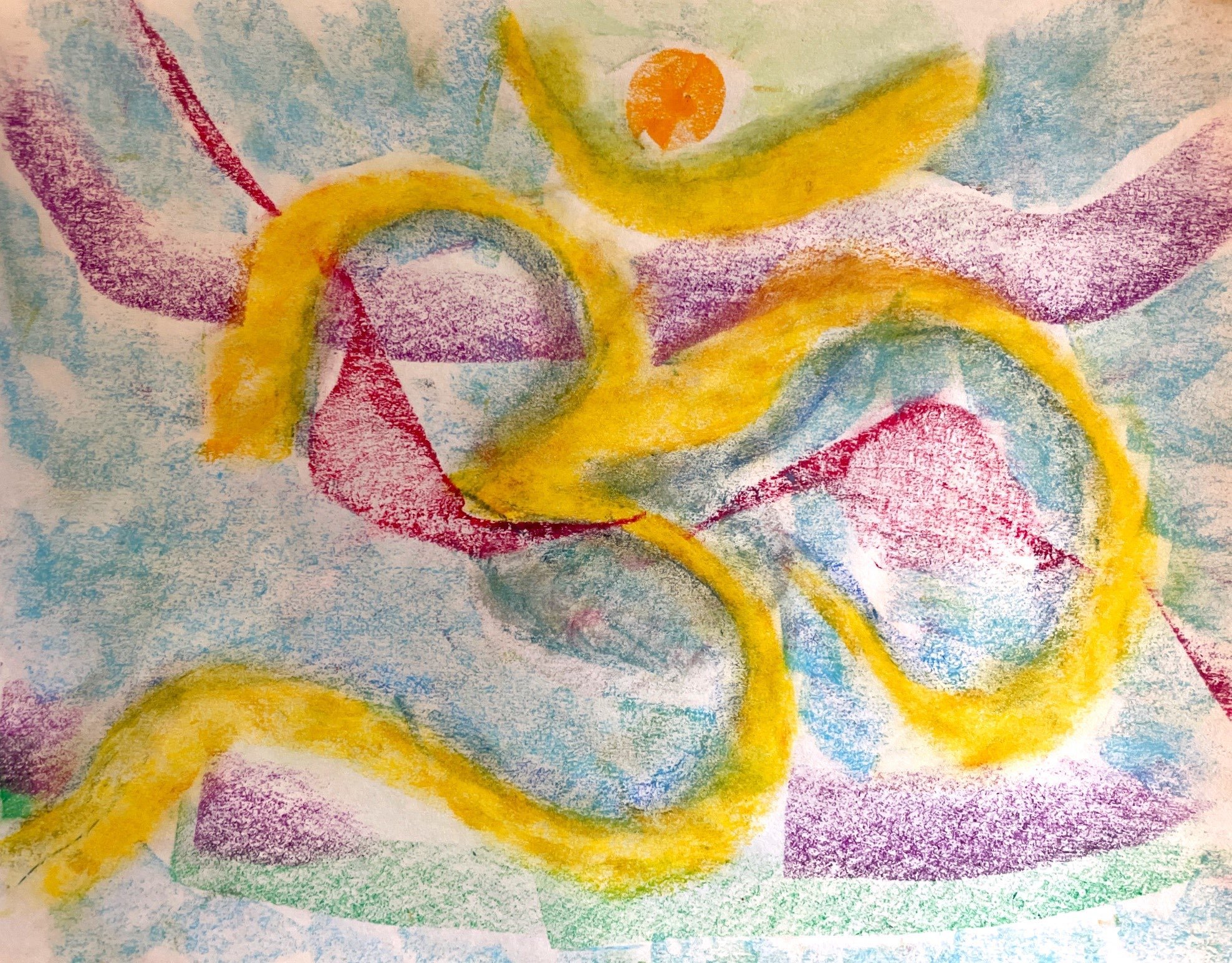Good morning. May this a be a day of service, delightful surprises and awesome insights for each of us.
Over the past few weeks we have been talking about some of what Patanjali shared in the Yoga Sutras. There is more I want to share from that, but at the moment I would like to talk some more about mantra.
In this country most people think of "yoga" as the yoga classes at studios, at health clubs, and gyms. They see pictures of people in yoga poses, they hear of it referred to in movies, books, radio, TV, etc. What people have come to consider yoga is only a very small part of yoga actually. Yoga came to us from India. The yoga that includes postures is Hatha Yoga. This is the yoga that uses the body as the channel to come into that state known as yoga. Yoga means union - union of body, mind and spirit, and union of our individualized sense of self with that all encompassing Self.
There are several branches of yoga to accomplish this objective of yoga. There is Karma Yoga, which uses selfless actions as the means to that. Jnana Yoga uses the intellect by ceaselessly inquiring "Who am I?" and "What is all of this?". I know we all have those questions, but the Jnana Yogi stays focused on that, and it, too, takes one into the state of Self-realization. There is Bhakti Yoga, the approach of the heart, that uses worship and chanting and all sorts of devotional things. Patnajali's approach, which includes Hatha Yoga, too, is known as Raja Yoga, the Royal Path.
In India, and, in fact, throughout the world, the most used yoga approach is Mantra Japa. There is probably 900 times more Mantra Japa done than work with asanas (the yoga postures). So let's talk some about this widespread practice - what it is, how to do it, some of it's effects and benefits, why it is so popular, etc.
Mantra Japa is repeating a sound formula. It can be very brief, such as OM, or OM NAMAH SIVAYA, or OM HRIM NAMAH, or OM SHANTI, etc. Or considerably longer. There are a lot of mantras. I am most familiar with the Sanskrit mantras, but there are mantras in Hebrew, Greek, Latin, Chinese, Hawaiian, Native American tongues, and English, too. In almost every faith their is a practice of repeating of some sound formula, such as use of the Catholic Rosary. This really happens throughout the world and all faiths. But why? What is it? How does it work? Why do faiths include it to help seekers connect with the Divine?
The mystics have told us that in this time when we have taken birth, the human condition (the state of our minds, our world and the collective consciousness) finds this practice of repeating a sound formula especially fitting. It is one of the easiest things for us to do. It readily catches our mental attention. It can be done in myriad situations and while doing lots of other activities.
For a moment accept that there is no more effective and pure form of spiritual practice (which happens to be true - but even if you are not yet aware of that, just accept it for the moment). Now look at how easy it is to do this most useful spiritual practice... You can repeat mantra while lying in bed, while brushing your teeth, while fixing breakfast, while driving in the car, while waiting for something to upload or download on the computer, while the phone is ringing before someone answers, when you are put on hold, while swimming, while showering, while making love, while jogging or biking, while taking a walk, while mountain climbing, and, oh yes, while sitting at your altar. Is there any other spiritual practice so accessible?
Like other spiritual practices, to really have it work for you, you need to do it every day - not sometimes. Also, there are two basic ways to use mantras. One is to use it to come into the fullness of your Self, become enlightened and free. The other is to use the mantra to serve some other specific intent... healing, wealth, overcoming fear, developing psychic insights and powers. Mantras can do all of this for you.
It is totally safe to use Mantra Japa to come into Self-realization. There is actually no way to say it wrong or do it wrong when you have that highest, purest of intents.
However, if you are using it to manipulate circumstances in time and space, then there is some risk. You might be mispronouncing it and have a different vibration bringing some effect other than your intention. You might be creating karmic ties that will manipulate your life in the future. The effect you are working to accomplish may not actually be what is best for you or others in the bigger picture. This does not mean that you cannot use mantra in such a way, but that you should certainly check your motives, do it with prayer, and try to learn a proper pronunciation. [By the way, even though you will hear people telling you THE way to pronounce a mantra, there are a number of ways that are right. But there are also some that are wrong when you are trying to manipulate world circumstances. With that warning, let's move on to the safe way of using mantra - to come into the fullness of your Self.
The word mantra is Sanskrit. It means take away the mind (that aspect of the mind yogis call "manas"). Manas is the mental activity that is relating and planning and associating. It includes instinct and rationalizing. When you are supposedly quiet, but your mind is wondering about why something happened or trying to figure out how to go about something or wondering what people are thinking about you, etc. etc., this is manas. And when you repeat a sound formula with intention you will see that all of that simply quiets down and fades away while you are focused on your mantra repetition. You come into the now. Hence the yoga sages called this practice "mantra" - take away the manas.
We are almost ready to talk about how to pick a mantra, how to to create an effective Mantra Japa practice, some useful techniques, but we are also almost out of time for today. So we will continue with this next week.
Choose a mantra. Use it all the time. Never go through a day without repeating your mantra. Have fun. Love always.
Blessings,
jayadeva




